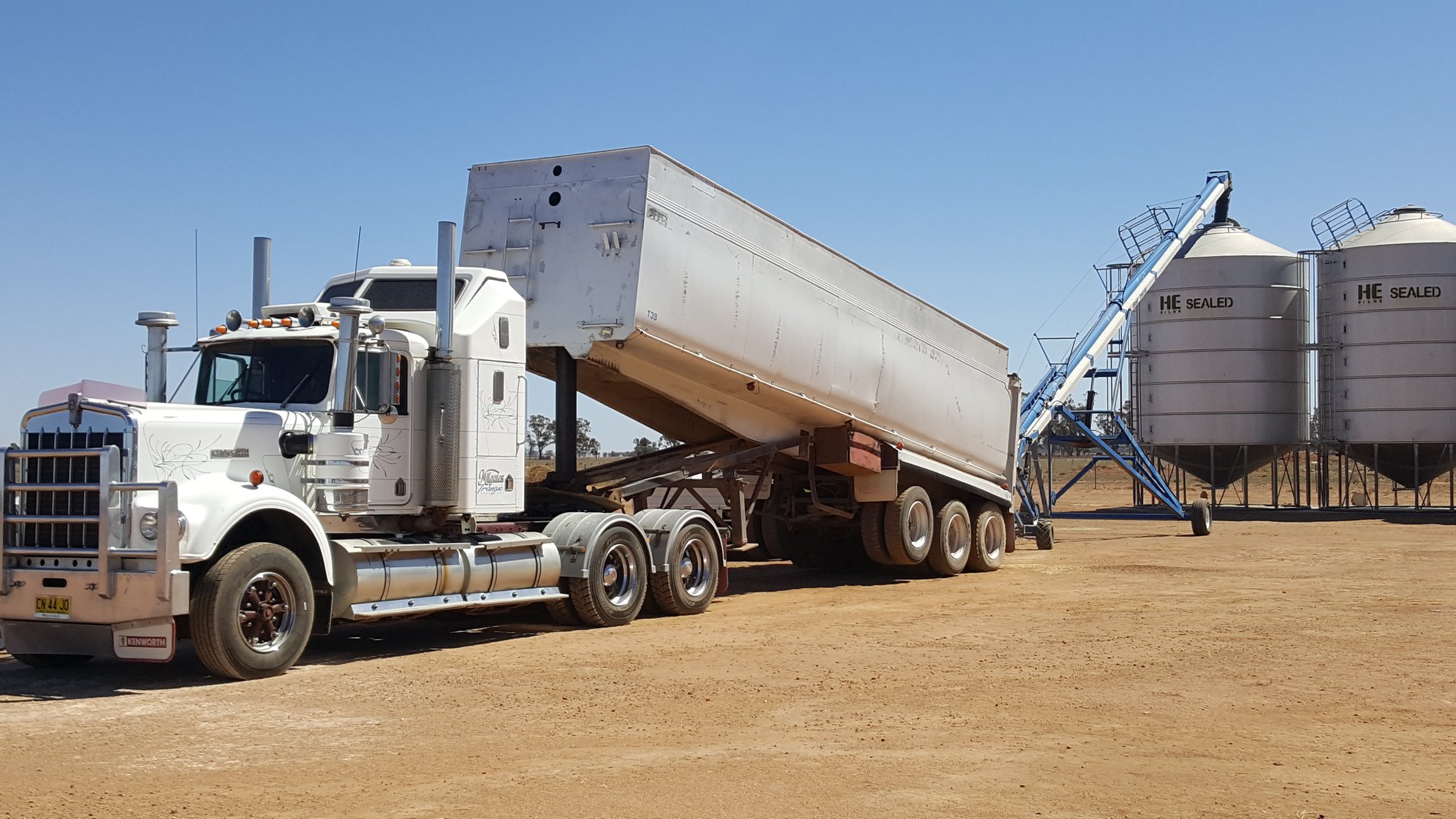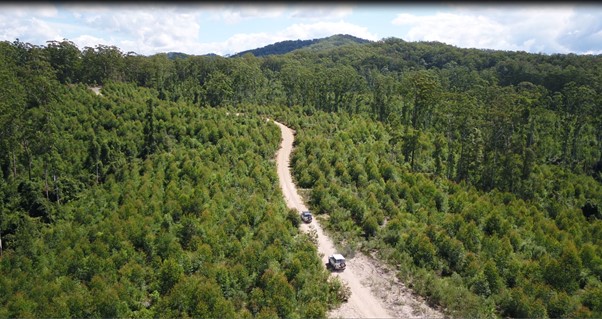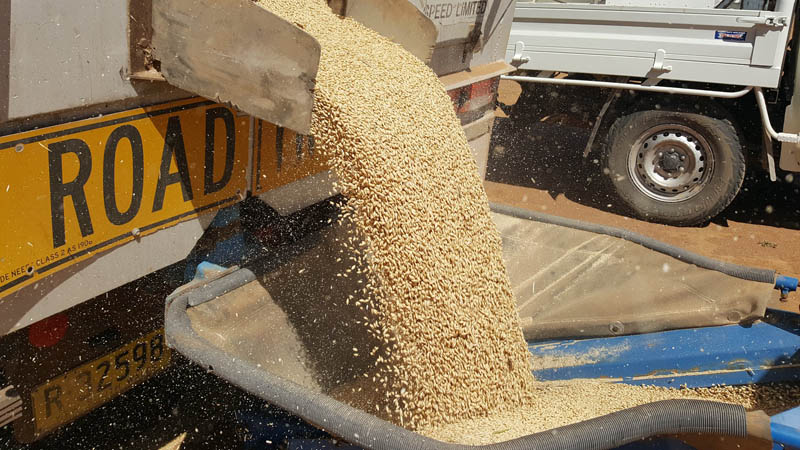Production
Production prospects improved as the growing season progressed and mild spring conditions set up crops in most northern and western regions for another big harvest, with growers experiencing good yields and grain quality. Notably, growers in northern NSW managed to deliver an above-average portion of malting barley. 75 However, for growers in southern areas, it was a case of too much of a good thing. Heavy rain and widespread flooding during September and October took the shine off what should have been another bumper year and raised crop quality and yield concerns. Harvest was effectively an early and a late crop, with a "break in the middle to reflect the impact of rain mid-planting". 119 Despite the wet conditions, state average yields were largely unaffected, approximately 26% above the 10-year average and reaching near record levels due to exceptional growing conditions in the areas not impacted by flooding and waterlogging. 1
Price
Prices began to lift again during February 2023. Growing competition from another season of above average feed wheat production meant that some feedlot rations substituted barley for wheat. 76 However, barley supplies across northern NSW and Queensland tightened considerably, with Northern NSW stock in high demand, underpinned by the high logistical costs of transporting grain from the more southern regions. Industry reports indicated a $60-$80/t premium in this market over southern sources. 77
Trade and Macroeconomic Conditions
Domestically, demand for feedgrains continued to strengthen. Solid global demand for Australian grain-fed beef and ample domestic supplies from recent bumper grain harvests, facilitated the continued expansion in the number of cattle in the key Queensland-Northern NSW feed market, which for some, feed barley remains the staple feed grain, despite trading at evens with wheat. 88 Consequently, alongside the strong national export program, barley stocks in Qld and northern NSW tightened significantly, boosting prices which lead to negative export margins, a function of the premium paid for feed barley over export parity. 42

In April 2023, with a view to reopening the Chinese market to Australian barley for the first time in three years, Australia agreed to suspend its complaint to the WTO while China conducted an expedited review of the measures. 108 Then, in early August 2023, the Australian Government was notified that China would remove the 80.5% anti-dumping and countervailing duties on Australian barley. The tariffs, which were introduced in 2020, effectively shut down the Australian/Chinese barley trade overnight. Since then, the industry diversified, and assisted by successive bumper crops, Australia increased exports to the rest of the world. However, the loss of the lucrative Chinese market came at a cost. Approximately 65% of Australian barley exports over the 5-years prior to 2020 were to China, of which about 44% was malting quality, which commanded a premium price. 35 Australian exporters subsequently turned to other high value malt markets such as Mexico, Vietnam and Japan and whilst these markets are high value, they did match that lost from the Chinese market.
With the removal of the tariffs, Australian Barley farmers can now compete on a more level playing field with other producers in the global market. Whilst the removal of the anti-dumping and countervailing duties means that Australian barley can resume trade with China, it is unclear whether China will regain its previous market share. At the time of writing, the volume of barley that has been committed to Chinese importers since August 2023 is uncertain.
Outlook
The re-entry of China into the Australian market has resulted in barley prices trending higher since the start of August and the ongoing dry conditions are likely to provide further support for domestic feedgrain prices moving into the new year. Global coarse grain prices are forecast to soften in response to rising global corn production although the global barley supply outlook remains tight, with reduced production expected across most of the top 5 global producers including the EU, Russia, Canada and Australia. Despite ongoing strong global demand, NSW barley exports are likely to decline in 2023-24, albeit from record levels. This fall will be driven by the forecast fall in production and softening export prices.
Stronger Primary Industries Strategy
Plant Regulation
Strategic Outcome

- 6.3 Regulate natural resource access now and for the future

Plantations on farms provide an alternate or additional revenue stream to land managers through carbon projects, timber production or other uses such as bushfoods or tourism. Plantations can also improve natural resources and can deliver environmental outcomes including increased biodiversity, erosion control, carbon sequestration, salinity management and other landscape benefits. Plantations also provide a critical sustainable and renewable timber resource to the community for essential products such as house frames, flooring, furniture, paper, poles and packaging.
Plantations are regulated under the Plantations and Reafforestation Act 1999 (the Plantations Act). The Plantations Act provides an integrated process for plantation authorisations. Key objects of the Plantations Act are to facilitate reafforestation and to promote and facilitate the development timber plantations on essentially cleated land. The Act is supported by the Plantations and Reafforestation (Code) Regulation 2001 which provides the minimum environmental standards required for all authorised plantations. The Department of Primary Industries (DPI) is responsible for regulating plantations on public and private land under the Plantations Act and Code. DPI assists farmers and corporate entities to make practical decisions based on the best scientific information available and assists plantation owners and managers to comply with the Act.
A review of the Plantations Act and Code was completed and published on the DPI website in December 2022. The purpose of the review was to assess the continued relevance of and need for the Plantations Act and Code, and if it were to remain in effect, determine if any changes should be made to strengthen its currency and value. The outcomes of the Review indicated that the Plantations Act and Code remain as important today as when they were first introduced. This is reflected in the Review’s recommendations to retain the Plantations Act’s objectives as well as provisions around the process for authorising plantations, and the powers to cancel the authorised status of a plantation. Many of the Review recommendations are underway including the establishment of a Reference Group to review the fire provisions of the Code. There are more than 1,700 authorised plantations in NSW, with a combined plantable area of approximately 450,000 hectares and retained native vegetation area of approximately 40,000 hectares. DPI continues to implement the Plantation Act and Code to ensure plantations are established and managed to environmental standards and to facilitate development of new plantations providing carbon sequestration, biodiversity outcomes and a renewable timber resource.




